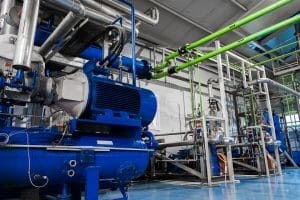 There are many different ways for companies to cool their electrical control panels and other enclosures, each with different approaches to handling electrical waste heat. Some methods help streamline the process of electrical cooling by creating efficient, reliable ambient cooling methods. They prevent overheating by keeping temperatures within electrical enclosures at just above the ambient temperatures outside of them. Other solutions are designed to cool the inside of electrical enclosures to below the ambient temperatures outside of them, but can still achieve results with just as much efficiency and reliability.
There are many different ways for companies to cool their electrical control panels and other enclosures, each with different approaches to handling electrical waste heat. Some methods help streamline the process of electrical cooling by creating efficient, reliable ambient cooling methods. They prevent overheating by keeping temperatures within electrical enclosures at just above the ambient temperatures outside of them. Other solutions are designed to cool the inside of electrical enclosures to below the ambient temperatures outside of them, but can still achieve results with just as much efficiency and reliability.
Differences between ambient and below-ambient cooling
Traditional electrical cooling has typically taken on the form of below-ambient cooling, in which air conditioners or air compressors generate cold air to chill the inside of electrical enclosures. For some applications, this level of chilling is necessary as the ambient temperatures outside of the enclosures is above the maximum operating temperature of the system. However, for many common applications, ambient cooling is more than enough to prevent electrical overheating, making the use of cold, processed air unnecessary. Instead, heat exchangers can achieve more reliable results at a fraction of the cost and using minimal energy compared to traditional solutions.
How heat exchangers make ambient cooling viable
Instead of circulating air through the inside of an electrical enclosure, heat exchangers achieve ambient cooling by constantly transferring electrical waste heat before it can accumulate. This process is achieved with the help of an eco-friendly cooling fluid, such as water, that’s able to absorb the heat without allowing for any rise in surrounding temperature. The fluid then transfers the heat to a cooler area of the heat exchanger, such as a heat sink, where it releases the heat and continues flowing back toward the source of waste heat. This continuous ambient cooling loop is significantly more manageable than the complex equipment needed to generate and circulate cold air.
How heat exchangers streamline below-ambient cooling
While ambient heat exchangers have proven highly effective and more energy efficient than conventional cooling solutions, some applications still require the below-ambient chilling that older solutions provided. Fortunately, they no longer need to rely on those older solutions to achieve it. With modern heat exchanger technology, companies can benefit from custom thermal solutions that allow for below-ambient cooling with the same level of efficiency as ambient heat exchangers. For example, units can be designed to utilize a cooling fluid that’s chilled to the appropriate below-ambient temperature, ensuring proper cooling throughout the heat transfer process.
For more information about how heat exchangers can accomplish ambient and below-ambient cooling, call Noren Thermal Solutions in Taylor, TX, at 866-936-6736.







